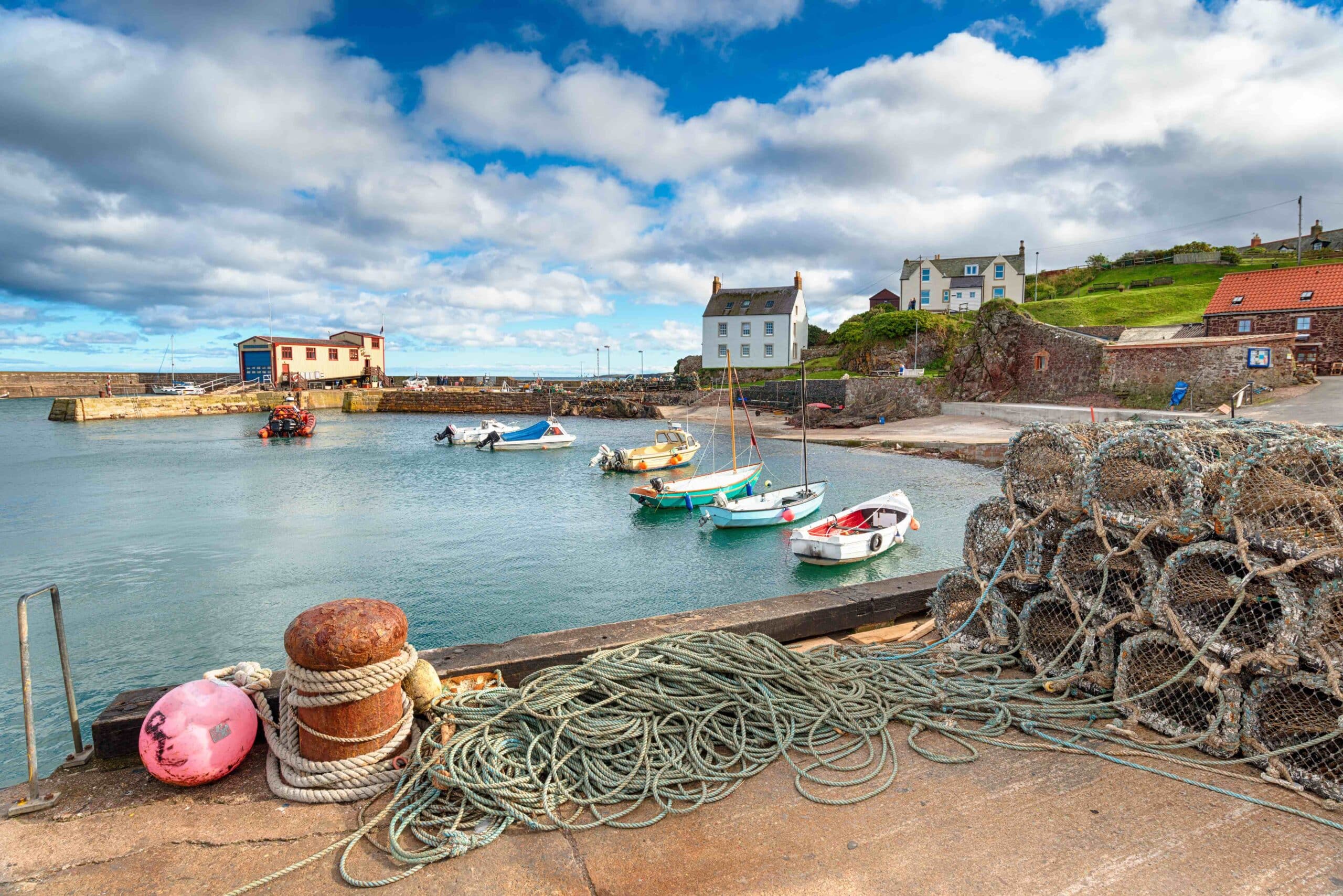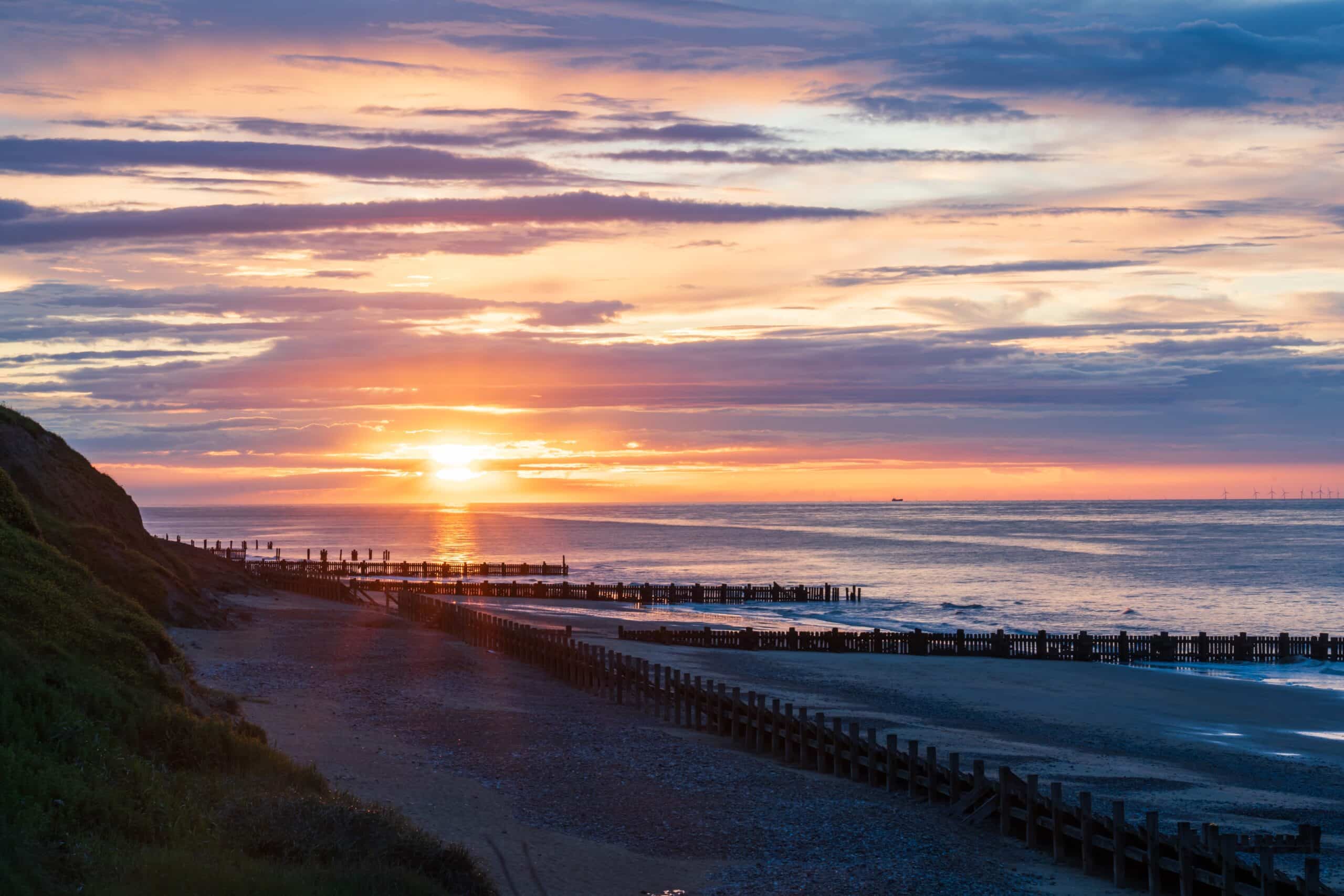![]()

![]()


At Faber, we are passionate about ensuring the fish we serve is responsibly sourced from British shores, ensuring we leave an incredible resource for future generations and supporting the communities that rely on them. Sustainable fishing is an essential approach, and here, we need to understand various fishing methods, focusing on sustainable practices, examples, and key principles that guide responsible seafood sourcing.
MSC Standards for Sustainable Fishing
Sustainable fishing is essential to preserving our oceans for future generations. The Marine Stewardship Council (MSC) sets rigorous standards to ensure fishing practices leave enough fish in the ocean, minimise impacts on marine habitats, and support ecosystems. Communities across the UK and globally depend on sustainable fishing for livelihoods and as a key source of food. With over a third of the world’s population relying on seafood as a protein source, sustainable practices can help secure food supplies and reduce the pressure on land-based agriculture.
The MSC’s approach to sustainable fishing is rooted in three core principles:
1. Sustainable Fish Stocks
Fisheries must leave enough fish in the ocean to allow populations to replenish, so fishing can continue indefinitely. This is achieved by setting limits based on scientific data, such as population assessments and juvenile survival rates, to ensure the stock remains healthy.
2. Minimising Environmental Impacts
Effective fishery management requires responsible practices to maintain a balanced ecosystem, protecting habitats and endangered species. The health of ocean ecosystems is critical not only for fish stocks but also for climate regulation, as oceans absorb carbon dioxide and support biodiversity.
3. Effective Fishery Management
Sustainable fisheries comply with laws, adapt to environmental changes, and employ management measures like setting catch limits, protecting spawning seasons, and establishing juvenile size limits. This adaptive management helps prevent overfishing, even under changing conditions.
Globally recognised, the MSC’s blue label assures consumers that their seafood choices support ocean health. Through sustainable practices, the UK can continue producing abundant seafood, as seen with the certification of Cornish hake, Shetland brown crab, and Poole Harbour clams and cockles. Here at Faber we use MSCs framework but we do seek to go further doing our own research and coming to our own decisions like not purchasing British caught Bluefin Tuna and avoiding both farmed and wild Salmon.
We have looked at each method of fishing and focused on those that we see as the most sustainable and kind to marine life. We understand that all fishing will have an impact, but it can be managed to minimise damage to the ecosystem and bycatch.

How it Works: A steel beam holds open a heavy-duty net as it is dragged along the seabed, targeting species like flatfish.
Why it’s Sustainable: With improved designs and management, beam trawling reduces seafloor disruption and increases selectivity.
Best Practices in Action: The North Sea flatfish fishery uses modified gear and regulated trawling zones to ensure minimal environmental impact.
How it Works: Large nets, held open by trawl doors, are pulled along the seabed, primarily targeting bottom-dwelling species.
Why it’s Sustainable: Using lighter, regulated nets in controlled areas helps reduce environmental impact and protects vulnerable habitats. This method of fishing can only be used in areas of soft seabed and although there is some impact to the seabed, it was found that natural tidal currents and wave action have a higher impact. These soft sand seabeds also recover quickly from the disruptive effects.
The Downside: This form of fishing is unselective so bycatch can be an issue, because of the location of fishing sites this is largely avoidable for many species, but it does pose a threat to some sharks and rays.
Best Practices in Action: The Scottish demersal fisheries adhere to sustainable practices by trawling in designated areas to protect marine ecosystems. Both better trawl design and selective area initiatives are being adopted to reduce bycatch and minimise net impact to the seabed including rollers on nets.
How it Works: Divers use scuba gear to collect shellfish like scallops, razor clams and lobsters.
Why it’s Sustainable: This low-impact method avoids damaging the seabed and is ideal for gathering shellfish with minimal disruption to the ecosystem,
Downside: There can be concerns that this form of fishing can yield high hauls and impact the population of species. Because of this there are strict government guidelines that must be followed.
Best Practices in Action: Divers in the West Coast of Scotland follow strict conservation guidelines for scallop collection, promoting sustainable shellfish stocks. At Faber we only use hand dived scallops in our restaurant and buy from recognised sources that meet the strict government guidelines.
How it Works: Floating nets target mid-water species like sardines and herring. Generally shot at dusk these nets and the attached vessel drift with the tide, hence the name.
Why it’s Sustainable: Drift nets can be managed to limit bycatch and have low environmental impact. Because it is midwater fished stocks it does not impact the seabed.
Downside: Deployed by large fishing vessels, these nets can be vast in size and can be attributed to a high level of bycatch including sharks and turtles. Believe it or not these nets were 10’s of kilometres long prior to strict controls and a more sustainable focus by the British fishing industry.
Best Practices in Action: Small-scale drift net fisheries in Cornwall use selective net sizes to minimise bycatch and protect local marine species. At Faber we only take fish from day boats which use these smaller nets and adhere to local conservation practises.
How it Works: Fish and shellfish, like mussels and oysters, are cultivated in contained environments. This is really a tale of two halves. Shellfish farming is one of the best forms of any form of farming on our planet whilst finfish farming is one of the most impactful on both the stocks and the natural environment.
Why it’s Sustainable: Simplistically farming reduces pressure on wild stocks and controls environmental impact. Shellfish farming like oysters and mussels using bag culture systems and rope culture systems respectively have minimal impact on the environment and is considered to improve the ecosystem and water quality. These shellfish are referred to as bivalves and filter the water (See more), they also encourage a greater amount of marine diversity to grow around the populations. Shellfish are seen as a great form of protein and do not require feeding or any form of chemical intrusion unlike land and livestock farming.
Downside: Fin-fish farms are generally seen as very intensive forms of farming, they intoxicate the localised ecosystem quite often with alien forms of feed and harmful chemicals like antibiotics. Often driven by hiogh demand for certain species regardless of populations size and seasonality they break with all forms of sustainable practises
Best Practices in Action: Mussel farms in Wales utilise eco-friendly rope cultivation techniques to produce sustainable seafood with low environmental impact as do bad cultivated mussels, which capture carbon and are a positive form of farming, At Faber we proudly work with oyster and shellfish farms but only use on finfish farm (Chalkstream Trout) to avoid negative ecosystem farming.
How it Works: Fine nylon nets anchored to the seabed catch fish by their gills.
Why it’s Sustainable: Properly sized nets target only specific species, allowing smaller fish to escape.
Downside: Like drift netting it can be harmful for bycatch and because it is deployed along the ocean bed this can be far more profound and harmful to more endangered species.
Best Practices in Action: Gill net fishers off the coast of Devon use selective nets to prevent juvenile fish capture, supporting local fish populations. This form of fishing is generally deployed by larger vessels and is avoided by us at Faber. In areas like inshore Cornwall this form of netting is now prohibited benefiting larger species like Bass.
How it Works: Fishers use hooks and lines to catch fish individually, with methods like handlining for mackerel.
Why it’s Sustainable: This selective technique minimises bycatch and allows undersized fish to be returned safely. It does not take out large proportions of the shoal, allowing population rejuvenation as this method only catches feeding fish not breeding.
Downside: The downside to this is minimal and due to the return policy not only is bycatch virtually non-existent so is the capture of pregnant fish and juvenile fish are easily returned to the ocean. Any form of fishing or hunting has an impact but traditional methods like this minimise the impact and ensure future stocks are there for generations to come.
Best Practices in Action: In Cornwall, handline fishers catch premium-quality mackerel using sustainable practices that protect local marine life. Using specified bait and returning undersized fish to the sea ensures the population can re-establish itself and impact is less harmful than other methods. At Faber we prefer this form of fishing and work closely with suppliers to ensure we use this as a preferred method to make our landing board.
How it Works: Shellfish are collected by hand directly from the shore.
Why it’s Sustainable: This traditional method leaves habitats undisturbed and is highly selective.
Downside: All forms of scavenging and fishing has an impact on the environment and if areas are over harvested, they will lead to populations not being able to re-supplement growth. This must be carefully managed and monitored by farmers and conservation programs.
Best Practices in Action: Oyster collectors along the Kent coast practice responsible harvesting, ensuring the sustainable availability of shellfish.
How it Works: A main line with baited hooks targets species like cod and haddock, left on the seabed.
Why it’s Sustainable: Modified hooks and lines minimise bycatch, and careful regulation prevents overfishing.
Downside: Used less occasionally in UK waters the modified methods can be highly sustainable and are gaining traction in the US. Traditional methods are heavily associated with bycatch of endangered species and leaving them on lines for a prolonged time period rendering any form of recovery unlikely.
Best Practices in Action: Longline fisheries in Northern Ireland employ modified hooks to reduce bycatch and follow MSC guidelines to maintain healthy stocks. Under the right guidance this form of fishing, although rare in the UK can be preferred to more impactful methods and at Faber we do consider it as an option in the right circumstances.
How it Works: Two boats pull a large net between them, targeting mid-water fish like herring.
Why it’s Sustainable: Used in regulated zones, pair trawling avoids seafloor disturbance and reduces bycatch.
Downside: Not generally used by British fishing vessels it is used by French vessels outside of British waters. This method of fishing is adopted in spawning seasons and has a devastating effect on shoaling fish in breeding season.
Best Practices in Action: Very little can be said about best practices with this method. It is testament to British fishing and our regulations that this form of fishing is not carried out in inland waters. Care must be taken by restaurants like Faber to ensure we are unknowingly purchasing stocks from foreign vessels landing fish caught using this method. Short and traceable supplier chains with established relationship is key.
How it Works: Baited pots capture shellfish like crabs and lobsters, allowing non-target species to escape.
Why it’s Sustainable: Potting is highly selective and causes little disruption to the seabed. It is a traditional method and can be expedited from small vessels including zero impact rowing and sailing boats in some instances.
Downside: Like all forms of fishing, it must be managed with strict quotas to avoid overfishing. The pots are generally made of nylon and metal and if these are lost or discarded they pose a risk to marine life. Using pots to capture octopus is also seen as cruel as they are trapped in a small space for prolonged periods and as they show high levels of intelligence it is thought that it causes avoidable distress.
Best Practices in Action: Lobster fishers along the Yorkshire coast use biodegradable pots to reduce environmental impact and support sustainable shellfish populations. Many fishermen put spawning lobsters back into the water to ensure population regrowth and restaurants can also monitor stocks coming in and demand this of suppliers.
How it Works: A net encircles a shoal of fish, like sardines and anchovies, then closes to capture them encircling before they are hauled in.
Why it’s Sustainable: This selective method minimises bycatch by targeting only dense schools of specific species. Sonar is used to locate the correct shoals of fish and if quotas of bycatch (15% of haul) are exceeded for Mackerel and Bass the net must be released.
Downside: Bycatch and overfishing are issues and fishermen must show skill to not overhaul and take on excessive bycatch. Slippage can also occur whereby individual fish die in the process and slip back into the water, these must be recorded and logged with conservation agencies.
Best Practices in Action: Sardine fisheries in Cornwall use ring netting methods like purse seines, focusing on sustainable catches that protect local marine ecosystems. These vessels are small and operate within six miles of the coast, ensuring they must comply with strict conservation methods and recording of hauls.
How it Works: Traditional sail and oar vessels are used in some fisheries, avoiding motor use.
Why it’s Sustainable: This low-impact method ensures that fish populations remain healthy, relying on manual power to harvest seafood.
Best Practices in Action: The sail-and-oar oyster fishery in Falmouth, Cornwall, preserves a 150-year-old tradition, ensuring sustainable harvests without motorised equipment.
How it Works: Toothed metal frames dredge the seabed to capture scallops.
Why it’s Sustainable: Though more disruptive, selective dredging in regulated areas reduces habitat impact across the wider ocean bed.
Downside: This really is one of the worst forms of fishing and destroys habitat and after constant dredging it will wipe out populations. It’s heavily opposed by most conservation bodies and we at Faber do not purchase any dredged stocks preferring hand dived when available.
Best Practices in Action: Scottish scallop fisheries operate in designated dredging zones with strict seasonal limits to reduce ecological impact.
How it Works: Multi-layered nets anchored to the seabed capture fish of specific sizes.
Why it’s Sustainable: Different mesh layers allow smaller fish to escape, reducing bycatch and protecting juvenile stocks.
Downside: Larger species of bycatch can be caught in the net including endangered creatures likes sharks and rays. More devastating is when nets are lost in the water or caught by other vessels releasing them into the ocean as ‘ghost nets’ that continue to fish and harm sea life. Trammel nets can be up to 2,000m in length, so is considered industrial scale fishing. Bycatch is generally higher with this form of fishing than gill nets.
Best Practices in Action: Fisheries along the south coast of England use trammel nets with regulated mesh sizes, focusing on species-selective fishing with minimal bycatch. Cornish fishermen are also using ‘pingers’, sonar sounds to avoid cetacean bycatch. At Faber with avoid trammel catches as a form of supplying our restaurant.
How it Works: Fishermen row a small boat in a semi-circle on lines, casting a net around a shoal in shallow water of a bay or inlet where a shola has been identified and then hauled from shore in for the catch. This is a traditional method and takes at least 4-6 people. It is seen as more of a supplement to other more modern fishing practises, only being used a few times a year.
Why it’s Sustainable: A traditional, small-scale technique, beach seine netting leaves minimal impact on the ecosystem, it is only used in sandy seabeds so it does not damage the ecosystem and because of the traditional manual nature of the haul any bycatch can be released. If a catch is too large to be hauled in by hand part of the population is released creating a method that is self-regulating and limiting.
Downside: Some hauls can be over a tonne in weight, and as the species like mullet are not a highly sought after species it can lead to wastage especially where refrigeration is not available.
Best Practices in Action: Beach seine netting along the East Anglian coast follows traditional methods with regulated catches to support local fish stocks. At Faber we look for under utilised species like mullet as they are often overlooked on menus but have incredible flavour when served in the right recipe.

A Commitment to the Future of Our Oceans
When we started on our journey with Faber, initially delivering to doors in lockdown, then in a pub kitchen through to our first restaurant in Hammersmith today, we have had to learn along the way. The above ramblings were learnt and researched over months. We’ve made mistakes ourselves on the journey and our aim is to continually improve what we do to be less impactful on our shoreline and act as a showcase for our amazing seas and the bounty they have to offer.
Our goal and the long term narrative should be preserving our shorelines for future generations.
References and acknowledgements:
Sewell, J. & Hiscock, K., 2005. Effects of fishing within UK European Marine Sites: guidance for nature conservation agencies. Report to the Countryside Council for Wales, English Nature and Scottish Natural Heritage from the Marine Biological Association. Plymouth: Marine Biological Association. CCW Contract FC 73-03-214A. 195 pp. www.marlin.ac.uk/PDF/FishGuidance05_Final_Report_screen
https://www.cornwallgoodseafoodguide.org.uk/cornish-fishing-methods.php
CEFAS regulations for the Fal Estuary and Percuil River (Cornwall). http://www.cefas.defra.gov.uk
EU protected geographic status for designation of origin: Fal oysters www.gov.uk/government/uploads/system/uploads/attachment_data/file/271313/pfn-fal-oyster-pdo.pdf
And we are here! For office Christmas parties, canapes, light bites & celebrations, or a full festive fish supper (and fishless for the more carnivorous or vegetarians).
Read moreWe’ve been invited to host our very ow Chef’s fish counter and tasting menu at The Holborn Dining Room, part of The Rosewood Hotel London.
Read moreThis summer we’ll be taking up residency in collaboration with Setlist @ Somerset House. Shucking oysters on the riverside terrace
Read more
